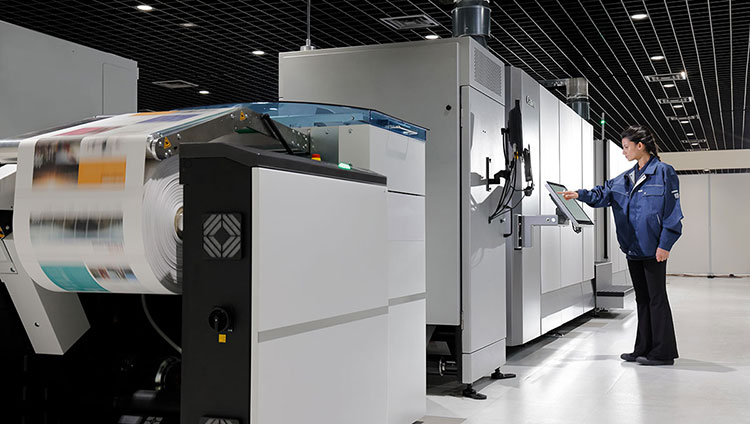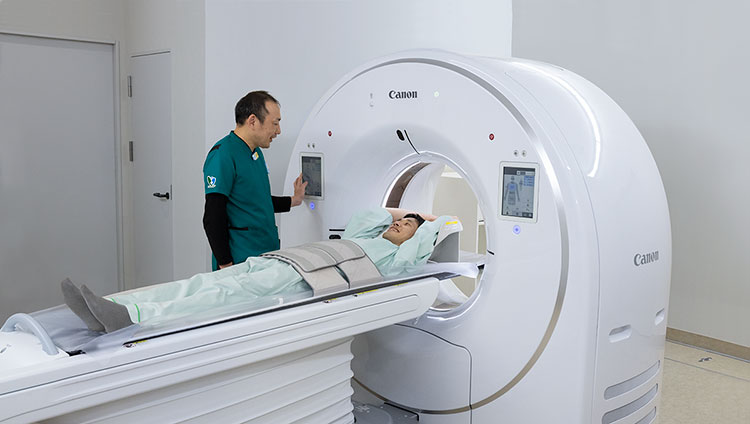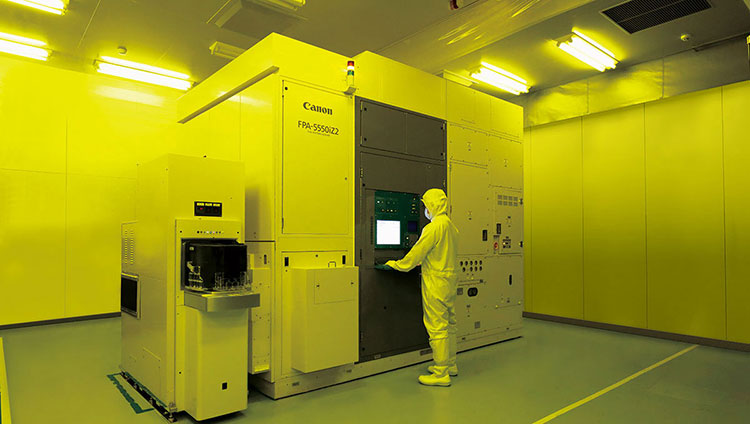Society realized by Medical Business
Greater detail and less burden on patients.
Next-generation CT blazes the MEDICAL trail for medical care.

Photon-counting CT dramatically advances CT examinations
Computed tomography (CT) systems are used to examine various parts of the body, from organs such as the brain and heart, to blood vessels and bone. The patient's body is bombarded by X-rays, which are read by a detector and used by a computer to generate a precise tomographic image.
CT has played a critical role in the early detection of ailments. Now, photon-counting CT (PCCT), which holds the promise to change the concept of CT, is attracting attention as the next generation of CT. Conventional CT requires a two-step process of first converting X-rays into light, and then converting the light into electrical signals in order to generate images. In PCCT systems, X-rays are directly converted to electrical signals, greatly reducing image noise. Reduced noise means imaging can be performed with reduced radiation doses. This will no doubt benefit patients who require regular CT exams to determine the effectiveness of treatment or to check for recurrence of disease. What's more, PCCT is expected to enable identification of smaller objects than currently possible. The bones of the ear, which are as small as 2 mm and are the smallest bones in the human body, should be easily visible, and blood vessels that are too thin to be imaged with current technology should be observable.
Potential to understand the status of drug delivery in the body
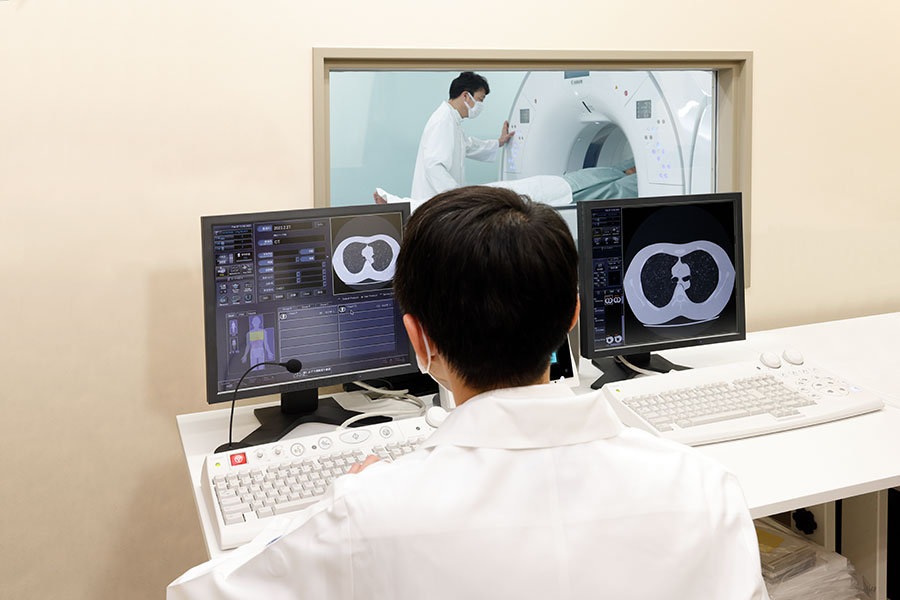
With PCCT, X-ray energy information can be precisely visualized. This makes it possible to identify specific substances in the body, including the concentrations of those substances. The PCCT system under development by Canon Medical Systems is able to display several specified substances using color coding. There are high expectations that this will help determine the effectiveness of treatment by allowing visualization of the concentration of a substance in a drug that reaches the affected area.
Canon Medical's PCCT utilizes technology developed by Canada-based Redlen Technologies, which joined the Canon Group in 2021. Redlen excels in technology for uniformly producing and processing the crystal material for receiving X-rays, which ensures stable and consistent performance. Canon Medical has implemented a modular detector that can be easily replaced during maintenance or in the event of failure, and also supports future system updates. Toward completion of the system, Canon Medical has applied the CT technology and know-how it has cultivated over its history to resolve such issues as real-time processing of large amounts of data, gantry vibration affecting high-definition images, and thermal management inside the system.
Canon will work together with medical institutions around the world to verify PCCT in clinical trials and progress toward commercialization. The company is striving to realize a future in which PCCT diagnosis is available worldwide and will continue to make efforts towards its adoption.
Society realized by Medical Business

Keio University and Canon Medical Systems have developed Upright CT that may help identify undiagnosed pains occurring only under weight loading while standing and shorten the examination time.
LEARN MORE
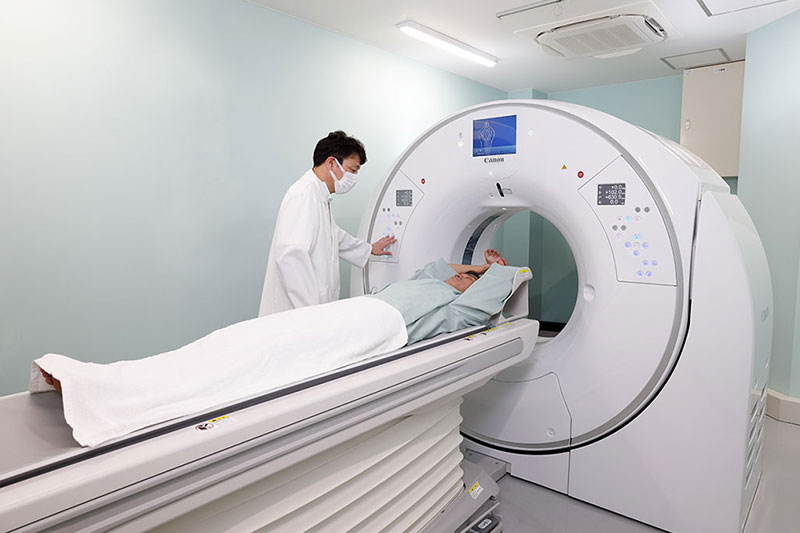
Photon-counting CT, which generates greater detailed images with less image noise, is attracting attention as the next generation of CT. Canon will work together with medical institutions around the world to verify PCCT.
LEARN MORE

Joint development with medical facilities such as Fujita Health University Hospital, which has the largest number of hospital beds in Japan, realize practical use of super-high-resolution, deep-learning reconstruction technology and open up new possibilities for cardiac CT scanning.
LEARN MORE

These mobile medical trailer CT systems, equipped with high-spec CT systems that support diagnostics with high image quality and low radiation doses, are used around the world.
LEARN MORE
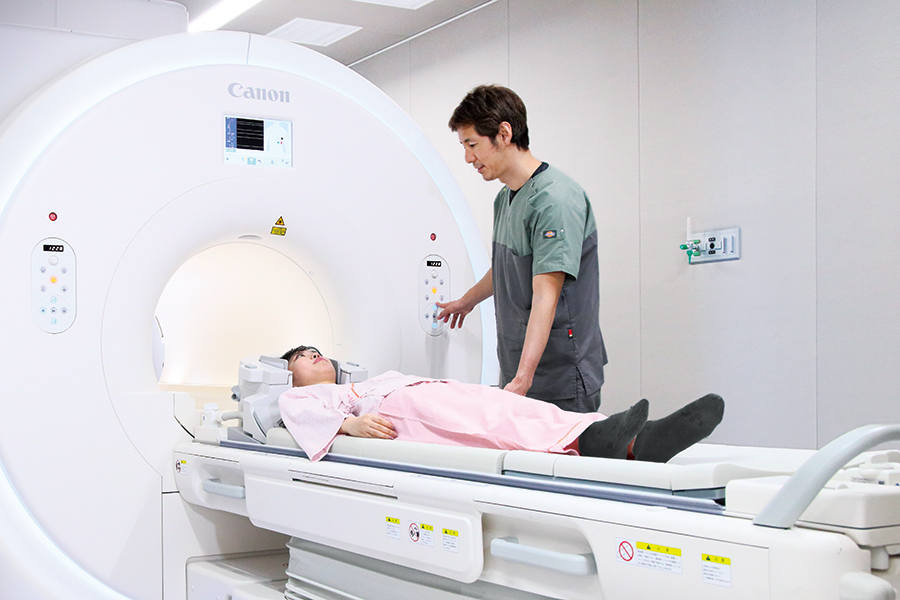
At Saitama City Hospital, which recently relocated to a new building, Canon's two MRIs greatly reduce the burden on patients thanks to a wide examination space, extremely quiet operation, and high-resolution CT imaging.
LEARN MORE

At the National Cancer Center Japan, the exposure-free diagnostic ultrasound system contributes to the early detection of cancer and the improvement of treatment accuracy.
LEARN MORE

